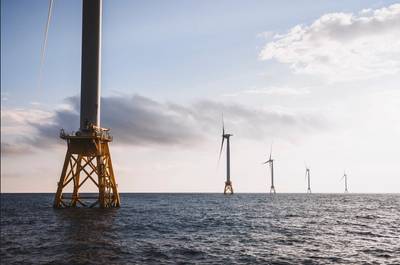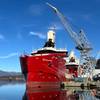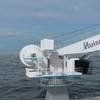Intelatus: A Month of Contrasts for U.S. Offshore Wind
February will be a month of contrasts for U.S. offshore wind industry. On the positive side, BOEM is moving forward with lease negotiations for an East Coast floating wind pilot array, and six developers submitted over 100 proposals in response to New York’s third offshore wind solicitation.
To support bids, local supply chain development commitments have been presented, which include plans to construct two wind turbine component factories.
At the same time, inflation rates have eased and key commodity indicators, such as U.S. steel plate prices, have also continued to ease.
In a move that indicates a strengthening domestic supply chain, a new Jones Act SOV has been announced, and steelmaker Nucor has opened a new steel plate facility focused on the material grades and plate sizes required for domestic offshore wind foundation production.
On the West Coast, ports are beginning to communicate development plans on how they can support California’s emerging floating wind industry.
However, despite the recent reduction in U.S. inflation, developers who have been negotiating power purchase agreements continue to communicate supply chain challenges impacting cost and timeline.
Ørsted has had to book a significant impairment on its Sunrise Wind project. Avangrid, is challenging a state ruling that it needs to build its Commonwealth Wind project and supply power to Massachusetts
Despite these inflationary challenges, the drive to grow the U.S. offshore wind segment into a leading offshore wind market continues. The foundations continue to solidify and support the deployment of 30 GW of offshore wind by 2030 and 110 GW by 2050.
Intelatus' forecast accounts for close to 70 projects that will install over 78 GW of capacity in this and the next decade, and a total 110 GW by 2050. The 78 GW forecast capacity will require capital expenditure amounting to over $240 billion to bring onstream, a recurring annual operations and maintenance spend of around $11 billion once delivered, and close to $35 billion in decommissioning expenditure at the end of commercial operations:
- Two major OCS projects with around 940 MW of capacity have been permitted, taken a final investment decision and one has commenced offshore construction and the other is preparing for offshore construction.
- The number of projects that are expected to make a final investment decision within the next 18 months is 13 amounting to around 14 GW of capacity.
- A further six projects with a capacity of close to 3 GW are expected to make an FID within 18-36 months as well as an additional 13 projects for over 13 GW in 36-60 months.
- Longer term, Intelatus has identified 35 projects with a total capacity of 48 GW, which support the installation of a cumulative 73 GW by 2035 and over 82 GW by 2040.
12 OCS developments containing 15 projects with a potential of close to 20 GW are currently undergoing federal permitting review to create the foundation of meeting the 30 GW by 2030 goal. 17.5 GW of project capacity has secured offtake commitments from states.
Longer term, deployment goals by states already amount to over 96 GW. The White House goal of 110 GW by 2050 is looking somewhat conservative.
Details can be found in Intelatus' monthly report on the U.S. offshore wind segment.
















